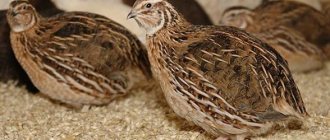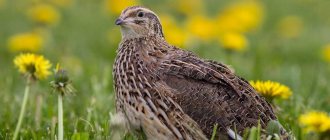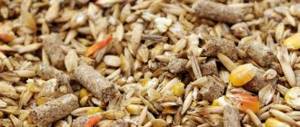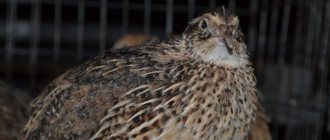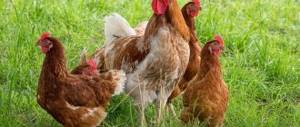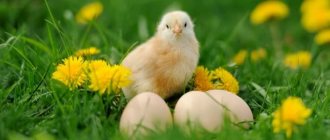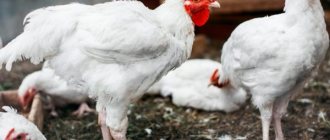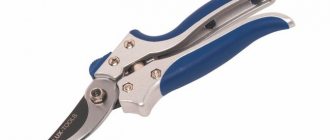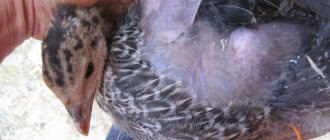There are several reasons for feathers falling out on the back of quails, not counting the natural process of molting. Most often, poultry farmers face this problem due to improper care and poor nutrition of the birds. To solve the problem, it is necessary to eliminate factors that threaten their health.
To do this, you need to check the temperature and humidity in the cage, drafts and feather mites, the number of individuals, and diet. When birds naturally molt, it is necessary to adopt a wait-and-see approach. If the feeding and maintenance conditions are normal, and this is not a period of natural plumage change, then the birds should be shown to a veterinarian.
Low humidity
When keeping quails, it is necessary to maintain a certain air humidity in the room at a level of 45-65%. When humidity drops below 40%, birds begin to feel thirsty. This can be determined by the following signs:
- decrease or complete cessation of egg production;
- look disheveled;
- birds constantly with slightly open beaks and rapid breathing;
- excessive loss and fragility of feathers.
In this case, quail molting can last quite a long time. To increase the humidity in the room, you need to place an additional container of water near the cage or cover the cage with a dampened piece of cloth. You must be careful, since exceeding the permissible humidity levels leads to colds in your pets.
Conditions for keeping quails
Farmers are interested in why quails lose feathers if they are fed with formulas from the manufacturer. Poultry farmers note that this phenomenon can be observed if the rules for keeping livestock are not followed. Quails are kept in multi-tiered cages.
It is necessary to observe the density of planting of birds. In cramped conditions, individuals develop poorly, gain weight, and quails lay few eggs. One of the problems of high quail population density may be pecking. The following indicators should be adhered to:
- up to 100 chickens are placed per 1 m2; resettlement is carried out every month;
- laying hens need more space; no more than 50 heads per 1 m2;
- individuals of meat breeds have a large build; There are no more than 30 heads per 1 m2.
The quality of plumage is affected by the microclimate in the poultry house. It is necessary to maintain a certain humidity and air temperature. The room is regularly ventilated. Optimal parameters:
- air temperature 20 C;
- humidity 60-65% for adult birds, 70% for young birds;
- air speed 0.2 m/sec; It is difficult to measure air speed in a poultry house; It is recommended to carry out regular ventilation; There should be no smell of ammonia and hydrogen sulfide in the room.
Correct development of quails occurs when a certain lighting regime is observed. For young animals, the duration of daylight hours is maintained at 24 hours. From the 2nd week, the day is shortened, bringing it to 16 hours. Lamps are installed in the poultry house and in the cages.
Lamps with infrared radiation are used for young animals. LED devices are well suited for adult quails. Light intensity can be different:
More on the topic: What should be the size of cages for quails?
| № | Helpful information |
| 1 | in the area of feeders and drinkers in the brooder - 120 lux; for adult birds 50 lux |
| 2 | during the daytime the cage is kept at 30-40 lux |
| 3 | leave control dim lighting at night |
Proper housing conditions will ensure normal growth and development of the bird. Quails naturally have good immunity. Birds living in the wild do not suffer from respiratory or infectious diseases. The necessary living conditions are created for domestic quails: they can withstand a certain microclimate and light conditions.
Diet
In addition to external factors, feather loss can be caused by an insufficient amount of microelements in quail food, such as vitamins E, B, C, A and amino acids (cystine, methionine). To stop the baldness of quails, it is necessary to add special yeast or vitamin supplements designed for quails to the food. Additionally, legumes, green food, meat and bone meal and fish meal are added to the diet. When rearing, it is necessary to take into account the age of the birds, because the diet changes depending on this. For example, laying hens' food should be rich in protein. To do this, boiled eggs or worms are added to food. It has been found that during molting, laying hens lose more feathers than other birds in the nursery.
Poultry diseases
Feather loss can be purely medical in nature. Often it occurs due to problems in the bird’s body, and they, in turn, are caused by errors in maintenance.
Hypovitaminosis
If there is insufficient intake of vitamins into the body, quails may experience hypovitaminosis. When the diet does not contain vitamins that cannot be synthesized by the body, birds develop vitamin deficiency - a condition in which their health deteriorates sharply.
Symptoms of hypovitaminosis:
- damage to the cornea of the eyes, conjunctivitis;
- lethargy, drowsiness;
- feathers puff up to the sides and fall out rapidly.
If measures are not taken, hypovitaminosis will lead to the death of quails. It is urgent to adjust the diet.
To compensate for vitamin deficiency leading to loss of feathers, quails are given:
- greenery;
- legumes;
- fishmeal;
- corn;
- carrot;
- beets;
- pumpkin;
- millet;
- fish fat;
- grass meal;
- cake;
- sprouted grain;
- milk waste;
- Brewer's yeast;
- meat and bone meal.
It should be remembered that an overdose of vitamins is no less dangerous than their lack. Poisoning of the body occurs - hypervitaminosis. Vitamins A and D in standard dosages can minimize the toxic effects of other vitamins.
Alopecia
Alopecia is a pathological condition accompanied by local loss of feathers. The disease affects both young animals and adults. Feathers mainly fall out of the back and head.
Alopecia can be caused by the following reasons:
- iodine or amino acid deficiency;
- violation of humidity and ventilation standards.
They solve the problem comprehensively - eliminate content errors and strengthen the diet with protein and fortified supplements.
Bird stocking density
The high density of birds in a cage also has a detrimental effect on the number of feathers. This is due to the fact that birds involuntarily pull out each other’s feathers with their claws, increasing molting and causing a deterioration in the quality of feathers and down. In order for birds to lay eggs well, it is necessary to use a spacious cage with dimensions of 80x40x20 cm, in which 1 male and 4 to 6 females are placed. Young quails can be placed in a cage measuring 100x50x40 cm, up to 30 pieces. straightaway. The standard for planting quails is no more than 70 individuals per 1 sq.m.
Causes of feather loss
Very often, poultry farmers are faced with the problem of feather loss in quails. The reason for this phenomenon most often lies in the incorrect mode of keeping and raising birds. The roots of the problem may be based on completely natural reasons, which are caused by banal molting, which occurs in many birds.
If we talk about the plumage of this bird, many breeders consider it a decorative component of the image. The average person will not be able to correctly answer the question whether a quail is a migratory bird or not, due to the fact that in our area such birds are found only in cages on a poultry farm. Meanwhile, quails are the only migratory representative of the chicken family. Therefore, care and breeding of quails should include careful attention to the condition of the pets’ plumage.
The main reasons for feather loss in quails can be divided into two groups:
- Improper maintenance or nutrition.
- Natural molting process.
If quail baldness is caused by reasons belonging to the first group, then the poultry farmer will need to take some action to eliminate them. If you do not react in time and do not correct mistakes in caring for birds, they may simply die. The quail owner does not need to react to natural molting. After all, that’s why it’s natural, so that it occurs without consequences for the health of the birds.
Feather mite
Sometimes the answer to the question of why quails lose feathers is the fact that the pets have feather mites. The parasite can only be removed by disinfecting the entire room. The drug against such a tick is sold in veterinary pharmacies.
Incorrect level of humidity in the area where the poultry is kept
Experienced poultry farmers know that the book on keeping quails requires maintaining a humidity level in the area where these birds are located within 45 - 65%. If the humidity is too low for the birds, they will not only feel discomfort, but will also signal symptoms of illness.
Signs that the humidity in the poultry house is lower than necessary:
- birds lay eggs worse or stop laying eggs altogether;
- they have a disheveled appearance;
- feathers become brittle and fall out;
- Quails have open beaks;
- the birds are breathing rapidly.
If feather loss in quails is caused by improper humidity, then you need to place a vessel with water (a bowl, bucket or cup) near the cage or cover the cage with a wet cloth. However, you need to take into account the fact that too high humidity causes colds in birds. A cold, in turn, will only aggravate the situation with the loss of plumage by quails.
The temperature in the cage is too high
If the air temperature in the cage itself, and not in the room, begins to rise sharply, the quail will react to this by losing feathers. Thus, his body tries to self-regulate body temperature. An air temperature of 18–25 °C is considered good for quail. Anything higher can cause the feather to fall out.
Drafts in the area where birds are kept
When understanding the reason why quails go bald, you should pay attention to the tightness of the poultry house itself. If there are drafts in quail breeding areas, the bird is guaranteed to lose its plumage. If the birds have a bald head and back, then you need to start sealing all the cracks in the walls and windows.
Improper diet of quails
Stabilizing the amount of vitamins A and B, methionine, cystine or other amino acids in the feed will help overcome the disease. To do this, you need to introduce feed yeast into the poultry menu, which is specially produced for the diet of poultry. You can purchase special vitamin complexes at the pharmacy, designed specifically for growing quails.
Proper maintenance and care of quails dictates that the diet should be based on the age characteristics of the body. If we are talking about laying hens, then you need to use food to help them saturate their body with proteins. To do this, poultry farmers give quails boiled eggs or mealworms as food. It has been noticed that the molting of laying quails is much more active than that of males or those birds that have low egg production rates. This is explained simply: most of the protein and vitamins received by the bird's body with food go towards egg production. As a result, the feather formation mechanism suffers.
Too high crowding of birds in the housing area
When there are too many birds in a cage, they literally begin to “walk on each other’s heads.” Naturally, during the process of such “community” they tear out each other’s feathers with their claws. And the crowding itself provokes excessive molting and deterioration in the quality of feathers and down.
The solution to the problem can only be the correct distribution of birds. In order to have good egg production, the book is all about quails: breeding, maintenance, care, and care recommends placing a quail family, consisting of 4-6 hens and one male, in a cage with dimensions of 80 by 40 by 20 cm. If the cage is smaller, then the quails molt and do not lay eggs. , and later a bird pestilence may occur. Young quails are allowed to be placed in a large group (about 30 individuals) in a large cage with dimensions of 100 by 50 and 40 cm.
Seasonal molt
As mentioned above, there are situations when quail molt, but nothing needs to be done. In this case, we are talking about the natural process of replacing plumage, which the bird’s body carries out periodically.
In order to distinguish feather loss from molting, you need to know at what age quails molt occurs. First, the quail undergoes a juvenile moult during the transition from the status of a young bird to the category of an adult bird. It replaces the primary plumage with the main one. It begins at the age of 4 weeks. In later life, quails molt periodically in accordance with the season.
Molting is repeated seasonally, and at a fairly serious age the bird may become completely bald.
Regardless of why quail molt - seasonally or due to age, you need to understand that such feather loss is natural. No action taken by the poultry farmer will be effective or necessary.
Man-made molt
If quails are hatched at home, poultry farmers are very wary of replacing a bird’s feather with a new one. Meanwhile, poultry farms actively use zootechnical molting as a tool to increase the level of egg production and extend the period of active exploitation of livestock. All birds, whether chickens or quails, increase their egg production when molting.
To trigger such artificially created molting, stress factors are used, such as fasting, water deprivation or reducing daylight hours to 6-8 hours. One of the programs for stress triggering molting is selected (for example, the number of hungry days or features of the light regime), the bird is prepared (for example, it is saturated with calcium before fasting) and molting is started. It is recommended to artificially molt birds at an age of at least 420 days. As a result of severe zootechnical molting, poultry productivity can be dramatically increased.
Diseases
In order to respond in a timely manner to a bird’s disease, you need to immediately ask yourself the question of why quails have ruffled feathers, if neither the conditions of detention nor seasonality could provoke molting. If the poor appearance of feathers and molting are also accompanied by an increase in the pet’s body temperature and a decrease in its motor activity, then most likely we are talking about an illness. Quails suffer from both contagious and non-contagious diseases.
If the disease manifests itself, you must immediately isolate the sick individual from the rest and invite a veterinarian.
Diagnostics will be the basis for choosing a treatment method in the future.
Diseases
If the birds are kept in proper conditions and provided with the necessary nutrition, then the cause of baldness and ruffled feathers can be various diseases of quails, which can be both contagious and non-contagious. The most dangerous diseases are the following: pseudoplague, pullorosis, aspergillosis, salmonellosis and colibacillosis. In any case, a bird with a suspected illness, especially one with a fever, must be removed immediately and a veterinarian must be called to determine the cause of the pet’s condition.
Quail diseases caused by poor diet
These diseases occur when quail feeding rules are violated. Improper composition of quail feed can deprive quails of essential vitamins and minerals. Or vice versa, an overdose of various mineral supplements and vitamins in the feed leads to excessive feeding with these substances. Both a deficiency and an excess of all this can cause various diseases in quails.
Violation of egg shell formation
As a rule, the cause of this disease is an insufficient amount of minerals, calcium and vitamin D in the diet of quails. With this disease, quails lay eggs with a very thin and soft shell, or without a shell at all, but only with an under-shell film.
Treatment: Increase the mineral content in the quail's diet. Add the required amount of chalk to the food, as well as crushed shells. Crushed shells from used quail eggs can be used as a mineral substance.
Various vitamin deficiencies
This disease occurs when there is a lack of vitamins of groups A, B, C, D in the body of quails. Thus, if there is a lack of ascorbic acid (vitamin C) in the body, there is a slowdown in the growth and development of young animals and impaired feathering. In adult quails, egg production decreases, and the quality of the shell also deteriorates.
Treatment: add to the diet the required amount of feed containing vitamins - fish and meat and bone meal, feed yeast, green feed.
Prolapse of the oviduct along with the egg
This disease can occur both as a result of improper nutrition and as a result of improper maintenance. It occurs if, when keeping quails at the age of 30-45 days, they use full nutrition for an adult bird and intense lighting for 20-24 hours. In this case, early sexual development is stimulated and early egg laying occurs (at the age of 30-35 days). In female quails that have not had time to frolic physiologically, there may be cases of oviduct prolapse along with the egg. In this case, as a rule, the quail dies. The same diseases can occur in adult birds if there is a lack of vitamins A and D2 in the diet.
Treatment: To eliminate this disease, add a double dose of vitamins A and D2 to the quail diet for a week.
Bird poisoning
Most often, quail poisoning occurs with large amounts of table salt. When this type of poisoning occurs, the bird drinks water all the time, various gastrointestinal disorders are observed, and the bird is depressed.
Treatment: the bird is given a decoction of flaxseed, with the addition of vegetable oil. The broth should have a slimy consistency. You also need to give a weak solution of activated carbon for 5 days. And for prevention, periodically give the birds special antibiotics or chamomile decoction.
Yolk peritonitis
With this disease, the serous covers of the peritoneum, pleura, and internal organs become inflamed. And it appears if the decomposed yolk mass of the ovarian follicles penetrates into the abdominal cavity of the bird. The bird becomes weak, depressed, and its appetite decreases. The feathers near the cloaca are stained with feces. In some birds, the temperature rises and, of course, the temperature drops and egg laying stops completely.
Treatment for this disease is unfortunately ineffective. You can, of course, use antibiotics or sulfonamide drugs (10 mg of sulfathiazole per 1 gram of feed), but most often the hen stops laying eggs after this. To avoid this problem, provide your birds with a balanced diet containing vitamins, protein and calcium.
Enteritis
It occurs due to an acute bacterial infection, which most often affects young individuals. It can be characterized by an unexpectedly beginning and rapidly increasing level of bird mortality. The birds have poor appetite, are tormented by thirst and diarrhea. Near the anus the feathers are dirty. If the bird suffers from diarrhea, you can give 1 tablet of Furazalidone per glass of water. If constipation occurs, you can use a glass spatula, which is used to insert the ointment behind the eyelid, and inject two or three drops of castor oil into the cloaca. Using a non-sharp tool, slightly destroy the plug that has formed. For prevention, periodically release birds from their cages to fly, and include fruits, herbs and raw vegetables in their diet.
Esophageal blockage
When the esophagus is blocked, the bird becomes short of breath, the beak is wide open, and the birds behave restlessly. By palpating the esophagus, you can detect a thickening hanging down to the ground. For treatment, inject 100 ml of vegetable oil into the beak of the affected bird. Massage with your fingers and rinse with water using a funnel and rubber probe. And for prevention, provide birds with a balanced diet with minerals and vitamins. Clean and fresh water should be in abundance.
Shedding
Birds have periods when they shed their plumage, which is their natural state and is associated with the replacement of feathers with new ones. In poultry farms, to increase the productivity of quails, they are subjected to forced molting.
Regular
Quails first molt occurs when they become adults. In this case, the primary plumage of the young is replaced by the main one at the age of about four weeks. Adult birds molt in accordance with the time of year. At an “advanced” age, quails can shed their plumage forever. During such periods of bird life, no additional measures are required from poultry farmers. They molt in March-April and October-November.
Zootechnical
At poultry farms where birds are bred on an industrial scale, zootechnical molting is carried out to increase the egg production of livestock and lengthen the period of active use of mature birds. To start this process, an unfavorable atmosphere is created, which causes stress in the laying hens. Lack of food, water or a decrease in the number of hours of lighting from 16-18 to 6-8 are used as a stress factor. Quails are first prepared with a special diet with a high protein content.
The hens are then kept in special conditions for a selected number of days, leading to molting. Birds do not shed old feathers, but simply become disheveled. New feathers begin to grow. This period lasts from 2 to 4 weeks until the plumage is completely renewed. Then the quails are gradually transferred to normal mode, increasing daylight hours to 16-18 hours and adding feed to the diet. This event allows you to dramatically increase egg productivity.
Parasitic diseases
Mallophagosis
With mallophagosis, downy feather eaters appear on the body of quails. The parasites feed on skin flakes, blood and bird feathers. Down-eaters reproduce extremely quickly.
Signs of pest damage to plumage: decreased egg production, slow growth and weight gain in quail, constant itching, loss of feathers, lethargic state of the bird.
If the listed symptoms are detected, treatment begins immediately. To get rid of parasites, “Butox”, “Frontline”, “Insectol” will help. Sold in veterinary pharmacies in the form of aerosols, powder or drops. They are used to treat the bird's body, avoiding contact with the eyes and beak.
In addition to medications, traditional methods are also used. They arrange baths with the addition of ash and sand. Ash bathing of quails prevents the appearance of new parasites and destroys the remaining ones. Rubbing dry chamomile and wormwood into the feathers of birds also helps.
Be sure to disinfect the premises, feeding and drinking equipment.
Contagious diseases of quails
Quails suffer from infectious diseases much less frequently than other poultry. But the possibility of their illness cannot be completely excluded. As a rule, contagious diseases arise as a result of exposure to various infections caused by any pathogenic pathogenic bacteria and viruses.
Note! The causative agents of these diseases, under favorable conditions, can easily and quickly multiply in the bird’s body, and as a result, your healthy, full of life quail turns into a sick and drowsy bird. And the saddest thing of all is that the mortality rate for infectious diseases can reach 100%.
As a rule, infectious agents and fly larvae are concentrated in poultry droppings, so timely cleaning of droppings is one of the preventive measures to prevent infectious diseases of your quails. Various antibiotics and antiseptics are used to treat infectious diseases.
Antibiotics are organic substances produced by microorganisms that have the ability to kill pathogenic microbes or prevent their growth. Antibiotics include: penicillin, tetracycline, streptomycin, oxyteraccycline, terramycin, biomycin, etc.
Antiseptics are agents that have an antimicrobial effect. They are also used to combat pathogenic microbes. Antiseptics include: boric acid, furatsilin, hydrogen peroxide solution, rivanol, potassium permanganate solution and chloracid.
Psittacosis is an infectious and extremely contagious disease, dangerous for both adult birds and young birds. Can be transmitted to humans. The causative agent of ornithosis or psittacosis is chlamydia of the trachoma genus, which enters the body through airborne droplets, food and drink. After infection, a severe fever occurs, the bird quickly weakens, and sleeps a lot. The heartbeat and breathing increase, and there is a risk of severe intoxication. Death usually occurs from nervous exhaustion and hemorrhages in the liver.
Ornithosis disease (Click on photo to enlarge).
Newcastle disease (Click on photo to enlarge).
Newcastle disease is a dangerous viral disease that is transmitted by contact from one individual to another. After infection, the bird’s body temperature quickly rises, lethargy and apathy appear. Appetite disappears, breathing becomes heavy, and you may notice severe shortness of breath. After a few days, sneezing and coughing occur, the feces develop a greenish tint and a foul odor. During exacerbations, the bird begins to walk in circles, and fits and seizures are possible. Death usually occurs from nervous exhaustion. There is no effective treatment for Newcastle disease or pseudoplague; infected individuals must be destroyed.
Pasteurellosis – this disease is also called cholera. It is an acute infectious disease that appears if its pathogen enters the blood. In quails, the liver begins to work poorly and problems with metabolism arise. If left untreated, the disease will develop into sepsis and the bird will die. Bloody droppings are the main symptom. A sick bird cannot be treated, so the remaining birds should be quarantined and all equipment and cages should be disinfected.
Salmonellosis – Birds become infected with this pathogen through droppings, water and contaminated eggs. Sometimes infection occurs through poor quality food. It can occur when birds are kept in a room where ventilation is poor and the density of quails per 1 m2 is high. Signs of the disease are: intestinal disorders, conjunctivitis, impaired coordination, drowsiness and weakness. Due to loose stool, the fluff under the tail sticks together and obstruction of the intestines occurs, which provokes poisoning of the bird’s body with bacteria. This disease has no cure. All sick birds are destroyed and the carcasses are not used for cooking. And the premises, cages and equipment must be disinfected.
Pseudoplague is also called “Newcastle” disease. It is dangerous because it can be transmitted to humans, and the bird can die in a few hours. In humans, it is expressed by diseases of the eyelids or eyes. A bird can become infected through contact with a sick bird, its droppings, as well as food, water or any equipment contaminated with droppings. Spreaders may be rats, dogs or waterfowl. The incubation period of the disease is from 2 to 15 days. It can occur with or without symptoms. Symptoms: little movement, bad odor from the beak, green droppings with blood streaks, poor appetite, difficulty breathing. It happens that the virus is in the blood of a bird and does not manifest itself. And sometimes the symptoms are mild - numbness of the limbs, seizures, and also a strange position of the head and neck. Opinions differ on what to do with sick birds: some say that the bird needs to be isolated and a veterinarian should be invited, while others believe that it is inappropriate to treat such a bird.
Aspergillosis is a fungal disease that is dangerous for many poultry. In adults, it may not manifest itself in any way, but in young animals the following symptoms appear: difficulty breathing, weakness of the body, the beak and paws acquire a blue tint, and severe thirst. Treatment can only be prescribed by a veterinarian. This may be a combination of vitamin therapy, antibiotic therapy and antifungal drugs. In order to prevent the occurrence of this disease, it is necessary to provide the bird with adequate nutrition, a clean room, and fresh and clean water in drinking bowls. And also do not forget to periodically wash the floor in the room with disinfectants.
Colicbacteriosis is a disease caused by E. coli. Birds become infected through food, water, and feces. A sick bird becomes lethargic and drowsy, the beak may turn blue, diarrhea appears, and the feathers near the cloaca become stuck together. Only a doctor can identify the presence of this pathology, and for treatment they use antibiotics and introduce acidophilic yogurt into the diet. Healthy birds are vaccinated, and cages and all adjacent equipment are disinfected. Prevention would include providing the bird with clean water and food, as well as cleanliness in the cage.
Helminthiasis - birds become infected with Singamustrachea worms. Symptoms include shortness of breath and cough. Treatment is carried out with Thiobendazole, and young animals must be isolated from adults. In order to prevent widespread infection of birds, be sure to follow a number of steps: separate adult birds from young ones, keep the chicks clean, keep one adult bird in a cage, and if new quails are acquired, keep them separately for 1 month.
Pullorosis - young quails are susceptible to this disease. There is only one outcome of the disease - the bird dies. And this disease can be caused by simple overheating or hypothermia, or poor quality food. A sign of the disease is a change in the color of the droppings, it becomes greenish-brown or white. Also, motor activity decreases; birds may fall on their paws, tremble, and hide in corners. The anus dries up and the bird dies. It is better to eliminate a sick bird, and disinfect the equipment and cage.
Keeping quails at home: a step-by-step guide (read more)
Eye diseases - conjunctivitis
These are various conjunctivitis. The nature of the disease may be viral or the quail may become ill due to insufficient hygiene in the poultry house.
Symptoms of conjunctivitis include swelling of the eyelids, mucus discharge from the eye and, as a result, its sticking together.
Maintaining proper level of cleanliness in cages, absence of drafts and a good balanced diet will help prevent this disease.
Treatment of conjunctivitis is facilitated by washing the eyes with a 3% solution of boric acid. If conjunctivitis is viral, treatment is carried out with antibiotics prescribed by a veterinarian.
More information on the topic: https://razvedenie-perepelov.biz
